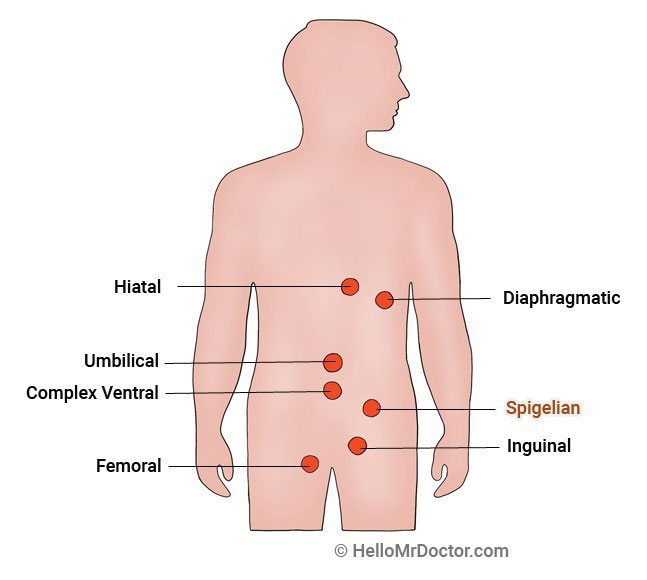Hernia
An abdominal wall hernia is a weakness or hole in the abdominal muscles through which organs or tissue may protrude. Some people may be born with a hernia. Others may acquire one over time. If left untreated, hernias can get worse.
An abdominal wall hernia is a weakness or hole in the abdominal muscles through which organs or tissue may protrude. Some people may be born with a hernia. Others may acquire one over time. If left untreated, hernias can get worse.
You might see a bulge under your skin that gets larger when you stand. You also may notice the hernia when you lift something, cough or even urinate.
Most hernias require surgical repair by pushing the bulging tissue back into the abdominal cavity and securing the weakened tissues. Often, a mesh material is used to help repair the weakness and prevent further hernias.
Located near the inner groin, inguinal hernia are the most common type of hernia. They are especially prevalent in men because of a natural weakness in this area.
Occurs in the outer groin and is most common in women, especially those who are pregnant or obese.
Located near the navel, umbilical hernia are common in newborns, obese women or those who have had many children.
Results from an incompletely healed incision at the site of a previous abdominal surgery. Incisional hernia occur most often in elderly or overweight people who are inactive after abdominal surgery.
Occurs when the upper stomach pushes through an opening in the diaphragm through which the esophagus passes.

The signs and symptoms of hernia depend on the type of hernia. Some hernias don’t cause any symptoms, but are discovered during medical exams.
Some common symptoms include:
Sudden pain, discoloration of the bulge, vomiting and constipation can be signs of “strangulation”. This occurs when the intestines or abdominal tissue becomes trapped in the weakened muscle layer. This condition can cut off the blood supply and requires immediate medical attention.
Painful or enlarging hernias usually require surgery to relieve discomfort and prevent serious complications. For common small hernias such as an inguinal or umbilical hernia, the hole or weakness is often repaired using a mesh material to reinforce and support the weakened area. A hernia may be repaired using an open or laparoscopic technique. Hernia repair is one of the most common surgeries in the United States. According to the FDA, over one million Americans undergo some type of hernia surgery annually.

Prior to your hernia repair surgery, please follow these pre-surgery guidelines:
Our surgeons perform open surgery, as well as minimally invasive surgeries, for hernia repair. Your surgeon will explain your particular procedure in more detail.
Minimally invasive surgery is performed with laparoscopy or robot-assisted surgery using the da Vinci Surgical System.
Laparoscopic surgery requires only a few small incisions into which your surgeon will fit long, thin surgical instruments and a tiny camera. The camera will provide images to guide the surgeon during the procedure.
Some laparoscopic surgeries may be performed using the da Vinci Surgical System. This robotic option gives your surgeon a magnified 3D high-definition view inside your body. The system also enables the surgeon’s hand movements to be translated into precise movements of small instruments inside your body.
With open surgery, your physician will make an incision at the site of the abnormality large enough so he or she can see and touch your internal organs while operating.
Lorem ipsum dolor sit amet, consectetur adipisicing elit. Dolores hic voluptatum adipisci, similique ex laboriosam.
Lorem ipsum dolor sit amet, consectetur adipisicing elit. Nisi quos, repellat maiores! Recusandae, consectetur, corrupti?.